|
|
|
|
 |
|
|
| Welcome! |
| Where did the summertime go? The Local Aid Support (LAS) team has been very busy with several initiatives. We completed a series of listening sessions with the Local Technical Assistance Program (LTAP) Centers. There is one in every state and we were able to have one-on-one discussions with 27 of them. The sessions provided an opportunity for us to hear about things that are working well in the states and what we in the Federal Highway Administration (FHWA) can do to better support the centers. The listening sessions highlighted the importance of good partnerships, effective communication, useful training, and core programs to improve safety. We will continue the conversations and welcome any feedback that improves our service to the local and tribal agencies. Congratulations to the 2021 Build a Better Mousetrap winners from Seminole County, FL; Independent Highway District, ID; Jones County, IA; and the Illinois Tollway. The FHWA recognizes agencies who go outside the box to solve problems and this year’s winners are deserving of the honor. We hope you enjoy reading about their innovations in this edition of the newsletter and be sure to check out the upcoming trainings, such as Project Bundling, Value Capture, Pavement Preservation, and more, listed later in the newsletter. |
 |
|
| Lastly, we invite you to visit our website and send your questions to CLAS@dot.gov. |
Sincerely,
Joe Conway
Director, FHWA Local Aid Support |
 |
 |
 |
In this edition... |
|
|
|
 |
 |
 |
|
Local Innovation |
|
|
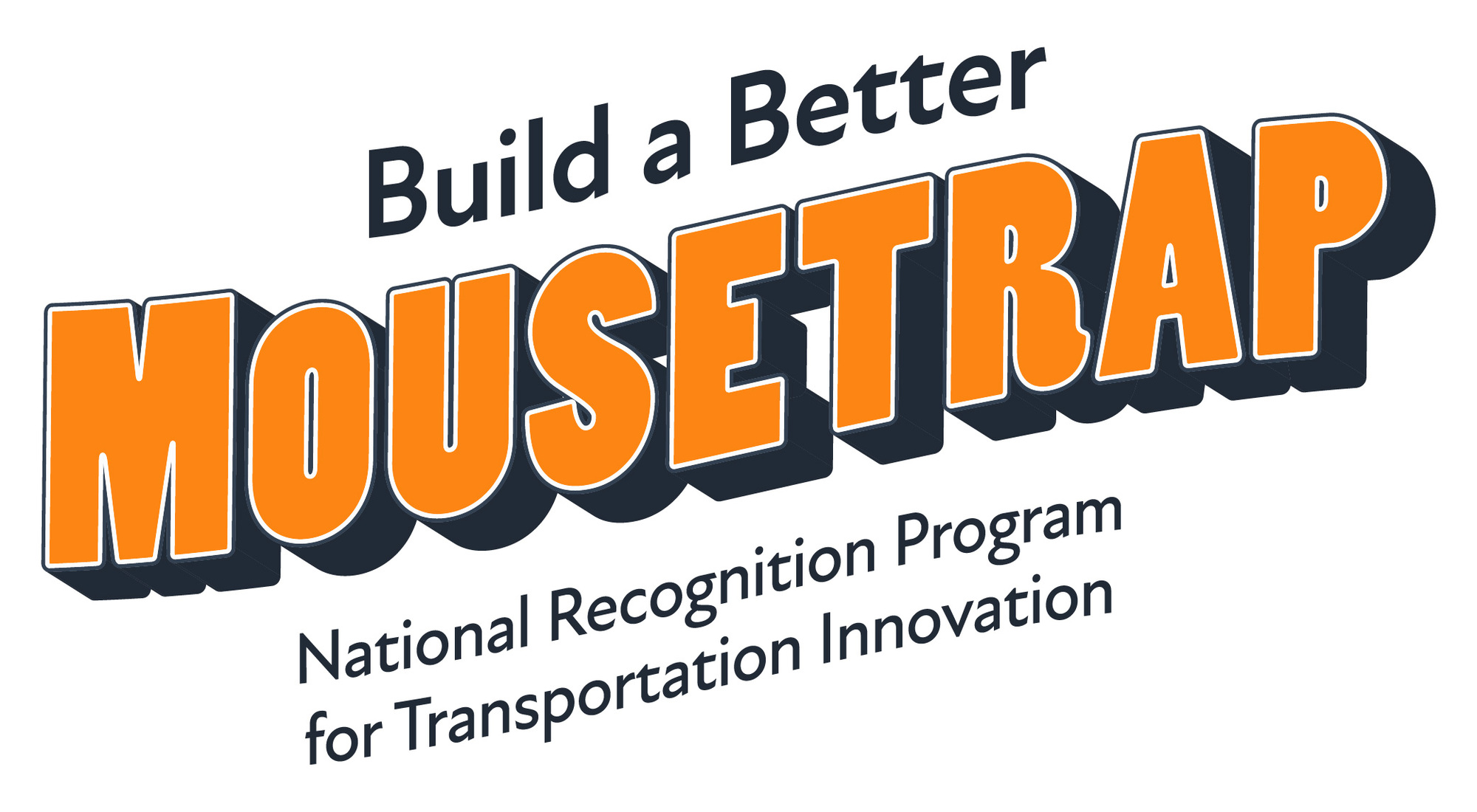 |
|
The 2021 winners for FHWA’s Build a Better Mousetrap have been announced: Seminole County, FL; Jones County, IA; Independent Highway District, ID; and the Illinois Tollway. The next four articles highlight their winning innovations and how they are making communities safer. To learn about all of the 2021 Build a Better Mousetrap entries, visit https://bit.ly/2021BABMBooklet. For more information on Build a Better Mousetrap, visit https://bit.ly/BABMHome.
|
| Build a Better Mousetrap: Smart Transformation Award
Seminole County, FL
|
|
|
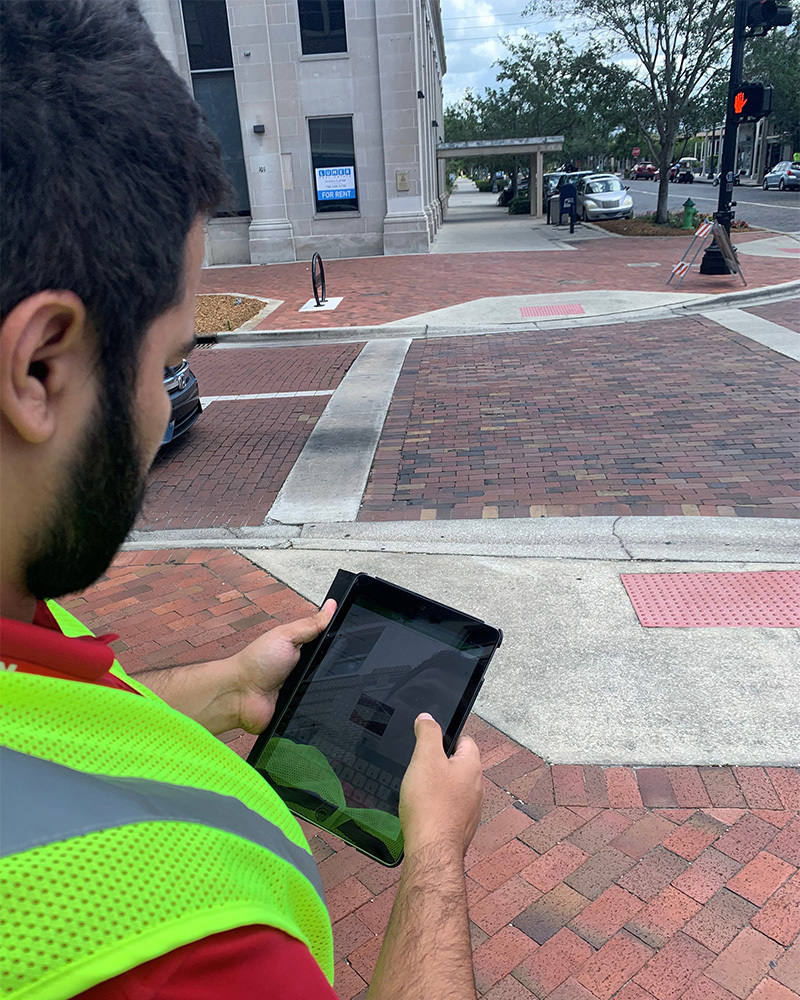 |
| Photo credit: Seminole County, FL |
|
Seminole County is one of the most populous counties in Florida. Residents who are considered disabled under the Americans with Disabilities Act (ADA) make up approximately 7 percent of the county’s population. To ensure safe, accessible facilities for these residents and ensure compliance with regulations, Seminole County regularly conducts ADA inspections of its facilities. The existing process for those inspections was outdated and time consuming, requiring inspectors to use paper, transcribe notes, and create tables. “The transcription process resulted in time-intensive duplication of efforts for inspectors. Efforts would then be duplicated once again to document the inspections in the geographic information system (GIS),” said Jose Salas, Seminole County Public Works.
The County began looking at options to better streamline the ADA ramp inspection process and improve its workforce management. The solution was to develop a mobile application using ArcGIS mapping software. The County already had licenses for the software for use in Environmental Services for water quality reports. They saw an opportunity to expand its use to improve the ADA inspection program. Working directly with inspectors in the field, Seminole County developed a mobile application in-house. “The first test was a giant failure because none of the images uploaded. It was a growing pain, but we were able to fix the coding. Despite the issues, all the inspectors were excited and responded positively to the app,” said Jose. “Everything we do is iterative. If it is not done right the first time, keep going until we get it where it needs to be.”
Since launching the mobile application, Seminole County’s ADA inspectors have reduced their reliance on paper, reduced inspection time from 1.5 hours to 5 minutes per ramp, and reduced time to document inspection results from 8–16 hours per project to zero. According to Jose, the total time to inspect a project was reduced from 3–4 days to 1 day. This turnaround has improved safety for residents and saved money and time for Seminole County’s ADA inspection program. “We continue to make improvements to the program, especially with reporting,” said Jose. “But our advice to other agencies is to try not to be controlled by your fears and know the limitations of your organization.” Jose said the greatest benefit is that they took a team-centric approach to developing their solutions. “We are a community and make every effort to work as a community. We support each other any way we can.”
Congratulations to Seminole County as the 2021 Build a Better Mousetrap Smart Transformation Award recipient. They are also the national overall winner as selected by attendees at the National Local and Tribal Technical Assistance Program’s Annual Conference.
Seminole County is dedicating this award to their co-worker Calvin Landers, who they lost in a tragic accident a few years ago. Calvin was a mentor and supervisor who oversaw all the county’s construction projects. He is deeply missed.
Contact: Seminole County, Jose Salas, JSalas02@SeminoleCountyFL.gov
Smart Transformation Award: A locally relevant significant change in any transportation activity or process that is SMART (Specific, Measurable, Achievable, Realistic, and Time-bound) in nature that results in improved efficiencies.
|
 |
| Build a Better Mousetrap: Innovative Project Award
Jones County, IA
|
|
|
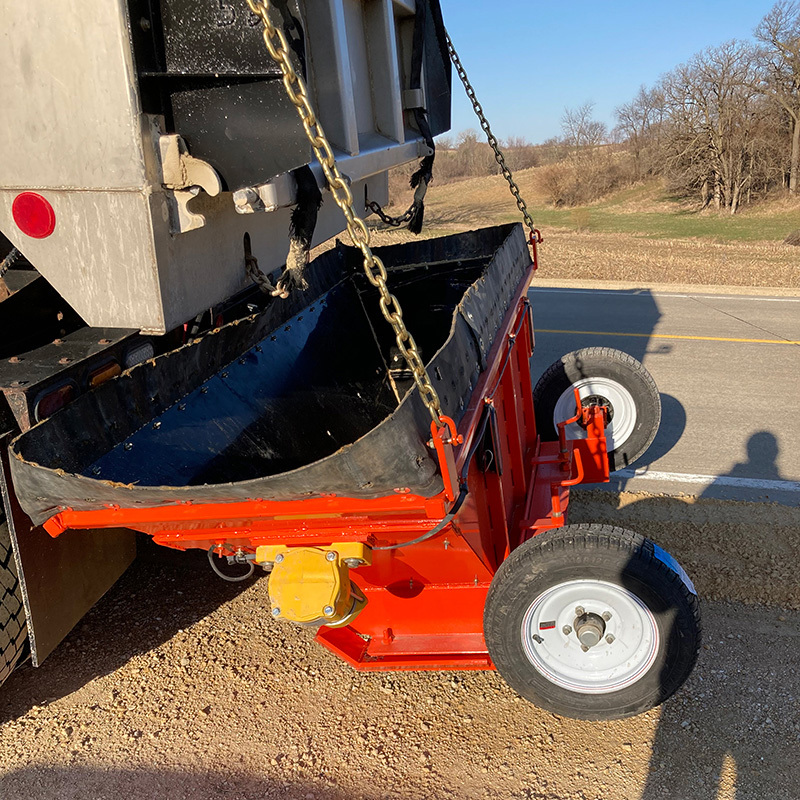 |
| Photo credit: Jones County, IA.Pictured is the Hopper innovation created in Jones County, IA to improve shoulder maintenance. |
|
According to Jones County, IA, routine maintenance of shoulders on the paved system has always presented issues. The application of stone along the shoulders was a slow process, and the stone was not uniformly applied. Cleanup after shoulder stone application was time consuming and the equipment used for the application required a lot of maintenance. Jones County needed a new solution. “We are a secondary road department, similar to hundreds of others, and don’t have the ability to purchase huge pieces of equipment,” said Todd Postel with Jones County.
The department began its search for a solution by looking at the Iowa Department of Transportation’s method of applying stone on their shoulders. “They use a device that requires them to change out the end gate on their dump trucks and place flutes in the dump box. We began sketching a prototype that eliminated the inefficiencies and constructed our device to use the existing dump box tailgate that’s on all our trucks so it would be universal, and no dump box flutes would be required.”
Jones County calls its attachment device the “Hopper.” It is designed with sloped sides, a Teflon liner, and a vibrator to ensure material flows down the chute and onto the shoulder. It also has a fully adjustable plate to accommodate elevation differences from the hard-surfaced road to the shoulder. “We now have three of them that were developed in-house. The only challenge we faced developing the Hopper was keeping it level. The rest was pretty straightforward,” said Todd. Shoulder maintenance is a high priority for Jones County, with shoulder edge dropoff as a major safety issue. Using the Hopper devices will result in less material wasted and reduced labor and equipment costs, and will produce more lane miles covered and increase safety for residents. “Our advice to other agencies is to not be scared to try something new or different. Keep the communication open, bridge the gap, and eliminate the fears. Testing the product is key,” said Todd.
Shoulder maintenance is a high priority for Jones County, with shoulder edge dropoff as a major safety issue. Using the Hopper devices will result in less material wasted and reduced labor and equipment costs, and will produce more lane miles covered and increase safety for residents. “Our advice to other agencies is to not be scared to try something new or different. Keep the communication open, bridge the gap, and eliminate the fears. Testing the product is key,” said Todd.
Congratulations to Jones County as the FHWA 2021 Build a Better Mousetrap Innovative Project Award recipient.
Contact: Jones County, Todd Postel, todd.postel@jonescountyiowa.gov
Innovative Project Award: Any solution that addresses any or all phase(s) of the “project” life cycle—Planning, Design/Engineering, Construction, Operations, and Maintenance. This project shall introduce new ideas, and is locally relevant, original, and creative in thinking.
|
 |
| Build a Better Mousetrap: Pioneer Award
Independent Highway District, ID
|
|
|
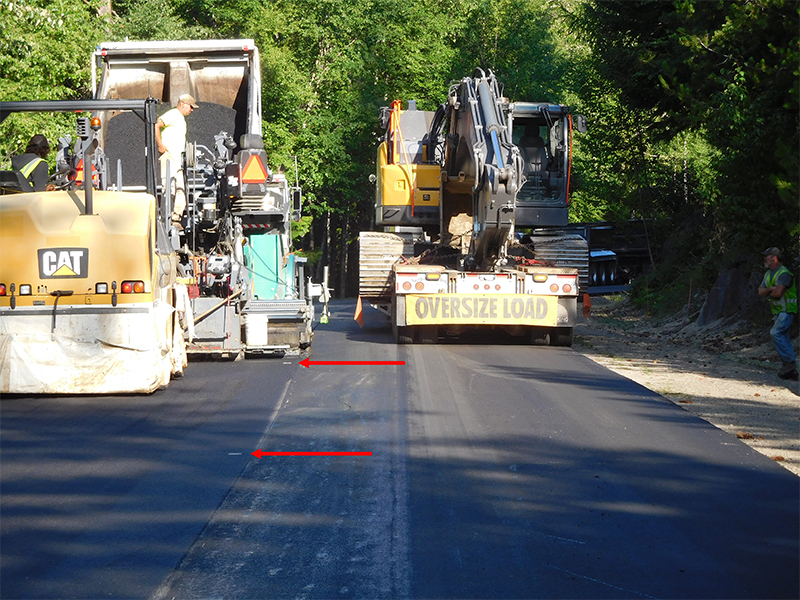 |
| Photo credit: Independent Highway District, ID. Pictured are pavers installing divots for Recessed Lane Indicators. |
| Schweitzer Mountain Road in the Independent Highway District (IHD), ID, gets anywhere from 100 to 300 inches of snow annually. Maintenance crews plow the road multiple times per day, which results in the scraping away of pavement markings. The reduction in visibility presented a safety hazard for drivers and for teams trying to get up and down the well-traveled route to the local ski area. “The road is one curve to the next and snow plow trucks tend to drive in a straight line. We needed a solution to keep the trucks on the road and not in the dropoffs,” said Mel Bailey with the IHD. |
| The developed the Recessed Lane Indicator. The process involves making indentations or divots along the roadway’s centerline using metal plates and then covering them with thermoplastic markings that can remain visible for up to 10 years. “We looked at other options that included the use of delineators, but they were troublesome for snow removal. And we considered recessed striping the road, but the cost was too high, and it would only hold up for 5 years,” said Mel. According to the IHD, the Recessed Lane Indicator works better, holds up better, and costs less. “Everyone was especially happy about this because it did not change the bid price for paving contracts, which was surprising,” said Mel. |
| The IHD is composed of four people and has a small budget. The biggest challenge with the innovative solution was working with the thermoplastic. According to Mel, “It has to be heated with a torch or flame, but there’s a fine line between burning the material and melting it to get it to stick to the pavement properly. That’s a skill set that is gained by doing the job. It doesn’t take too long for someone to learn the skill. When heated partially, the surface should look like a toasted marshmallow over a campfire.” |
| The IHD’s advice to agencies hesitant to step outside the box to solve problems: “Nothing ventured is nothing gained. Listen to the workers in the field. Ideas start from the ground up. Don’t be afraid to try something different than what you’ve done before,” said Mel. |
| Congratulations to the IHD as the FHWA 2021 Build a Better Mousetrap Pioneer Award recipient. |
|
Contact: Independent Highway District, Julie Bishop, ihdclerk@gmail.com
|
|
Pioneer Award: A locally relevant product/tool that is among the first to solve a maintenance problem with a home-grown solution. |
|
 |
| Build a Better Mousetrap: Bold Steps Award
Illinois Tollway
|
|
|
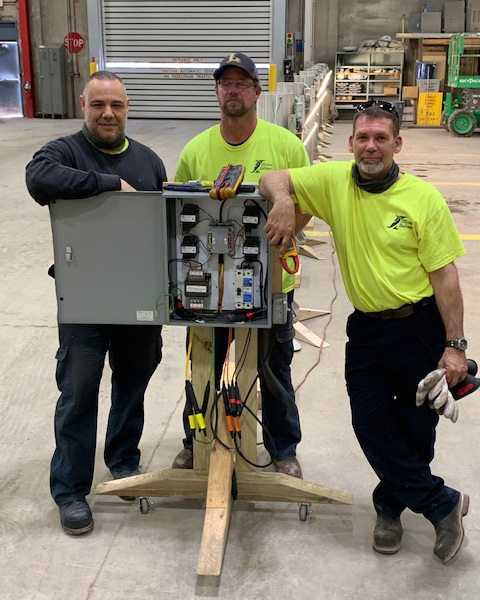 |
| Photo credit: Illinois Tollway. Pictured are Ben Pierce, Eric Johnson, and Nick Perez, who spearheaded development of the Road Electric Training System. |
| With many veteran roadway electric workers set to retire in the coming years, transportation officials needed a better way to train new electrical workers on how to assess, repair, and maintain the approximately 18,000 light fixtures along the 294-mile Illinois Tollway system. Traditionally, the biggest challenge was performing the training alongside high-speed traffic and in variable weather while working with high-voltage equipment. |
| Roadway lighting technician Ben Pierce has been with the Tollway for more than 20 years. He teamed up with his peers to seek input on developing a portable training device that models the Tollway’s actual electrical equipment. |
| “The biggest challenge to developing the device was ensuring the right amount of voltage for training new workers. In the field, we work with about 480 volts. We knew with the portable device, our goal was a voltage below 60,” said Ben. |
| The portable device, called the Road Electric Training System, is at 48 volts, which is 1/10th of the 480 volts in the field. |
| With the device, electric workers can be trained in a safe environment more quickly and with less downtime for inoperable equipment. “After tweaking the voltage to a safe level for training, we were very excited to see it working. Everyone was 100 percent on board and loved the idea,” said Ben. |
| Illinois Tollway executive director Jose Alvarez said, “As an organization, of course, safety is the top priority. We always encourage creativity and really support each other when we are developing tools and initiatives. This is a great example of commitment to the project itself and to the organization as a whole.” |
| The Road Electric Training System was built in-house using mostly discarded or scrap parts found around the Tollway facilities. The various components fit together like LEGO blocks with all the conduit slipping inside slots and the light pole keeping all the conduit tightly in place. It took approximately 150 hours for three people to develop the device. |
| “This was truly a team effort,” said Illinois Tollway Roadway Maintenance Manager Joe Dragovich. “We were able to tap into a deep pool of highly experienced, highly skilled staff to develop and fine-tune a valuable new training tool.” |
| The Road Electric Training System has accelerated training and the electricians are better trained. Lighting fixtures along the Tollway are fixed more quickly, which means less downtime for inoperative equipment and better roadways for Tollway users. Congratulations to the Illinois Tollway as the FHWA 2021 Build a Better Mousetrap Bold Steps Award recipient. |
|
Contact: Illinois Tollway, Joel McGinnis, jmcginnis@getipass.com
|
|
Bold Steps Award: Any locally relevant high-risk project or process showing a breakthrough solution with demonstrated high reward. |
|
| Back to top |
 |
 |
|
News & Happenings |
| Direct Liquid De-Icing Application Trial Drives Data in Wisconsin |
|
|
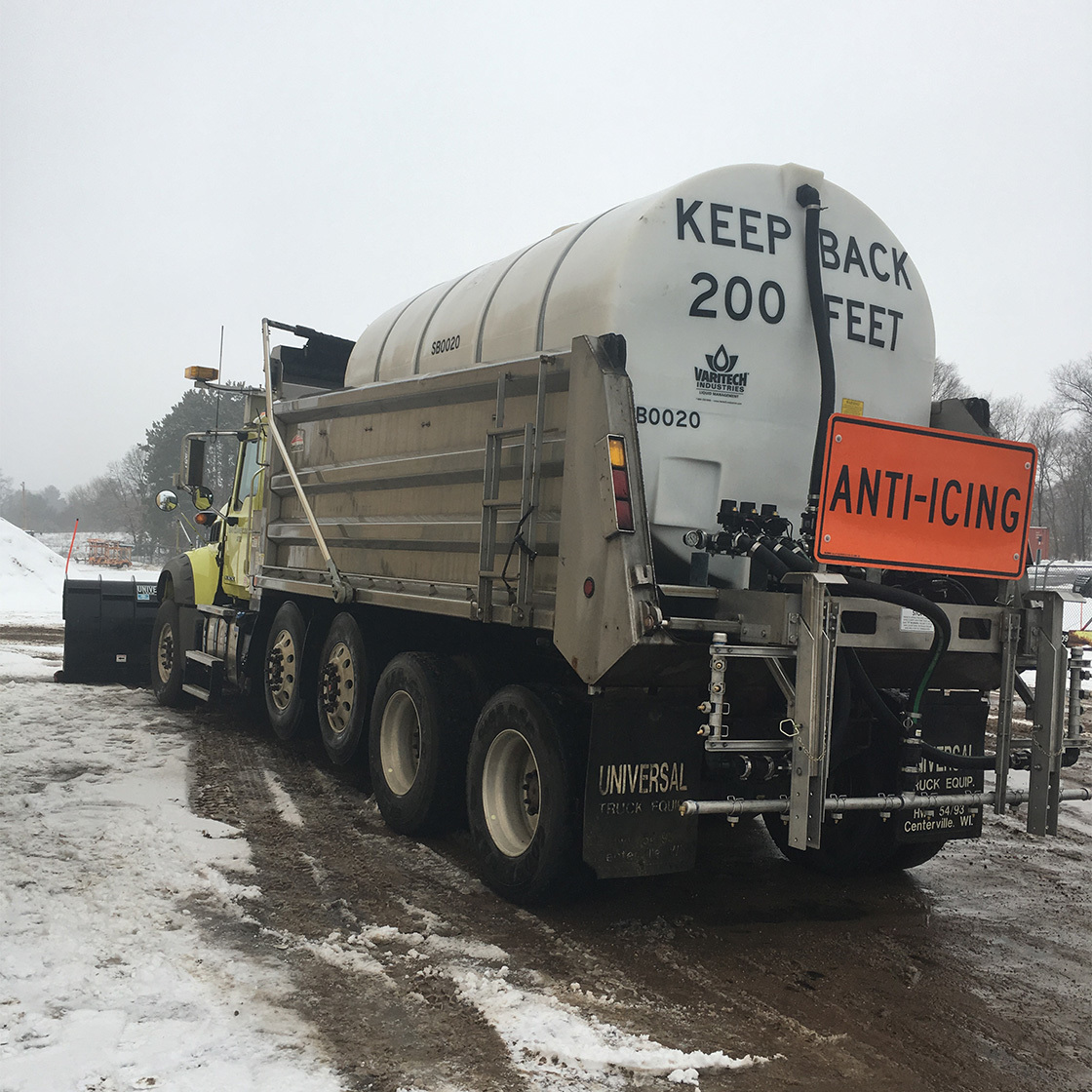 |
| Photo credit: Wisconsin LTAP |
| The winter season is difficult for transportation agencies. A lot of time and resources are spent clearing snow from roadways to alleviate traffic congestion and unsafe roadway conditions. In addition, the use of salt to de-ice roads can present operational, environmental, and cost challenges for agencies. “There is concrete evidence that Wisconsin lakes have an increasing concentration of salt in lakes that affects aquatic ecosystems, drinking water, and infrastructure,” said Andi Bill from the Wisconsin LTAP. |
| The Wisconsin LTAP has partnered with the University of Wisconsin - Madison, College of Engineering Traffic Operations and Safety Lab (TOPS Lab), Wisconsin DOT (WisDOT), and 10 counties to test direct liquid de-icing applications in road maintenance before, during, and after snow events. During the past year, the LTAP has been working with the partners on a pilot trial period. Liquid applications have been used for decades; however, solid salt has been traditionally used for winter maintenance. “Liquid applications implementation has been slow (in Wisconsin). Unfortunately, the use of solid salt is the main practice, and a change of traditional practices is usually the challenge specifically at agencies with no experience and limited guidance available,” said Andi. |
| Direct liquid de-icing is the application of a liquid chemical solution mixed with salt that helps break down and penetrate layers of packed snow and reaches the pavement surface. Benefits include a smaller amount of chemicals released into the environment (especially salt) and roads reaching bare/wet conditions quicker. Counties are able to produce their own liquid blends in-house, and the cost of overall spending for winter maintenance is reduced because liquid applications are less expensive, require less salt, and require fewer hours of operations. |
| The LTAP is currently gathering and analyzing data from the 10 counties that participated in the recent trial. Practices at each county are based on experience and resources available. Field data was collected from each county according to weather conditions and winter maintenance practice. Andi said, “For instance, weather data includes pavement temperature, humidity, wind, etc. Also, in terms of practices, data collected includes the amount of material used, frequency of application, time to bare wet, etc. In order to compare liquid with conventional solid salt applications, each county collected data at one study route (liquid) and one control route (solid salt).” |
| For the trial period, the LTAP and its partners have collected data from 147 storms. Data from an additional 80 storms during the initial trial will be integrated. “One of the main challenges is gathering enough data from each county to conduct a rigorous statistical analysis. Winters change from season to season, which may result in fewer storms per winter. Also, counties may have change in personnel, change of operations, or limited resources, so counties are not able to submit data in some cases,” said Andi. |
| For more information on the direct liquid de-icing application trial, contact the Wisconsin LTAP. |
| Back to top |
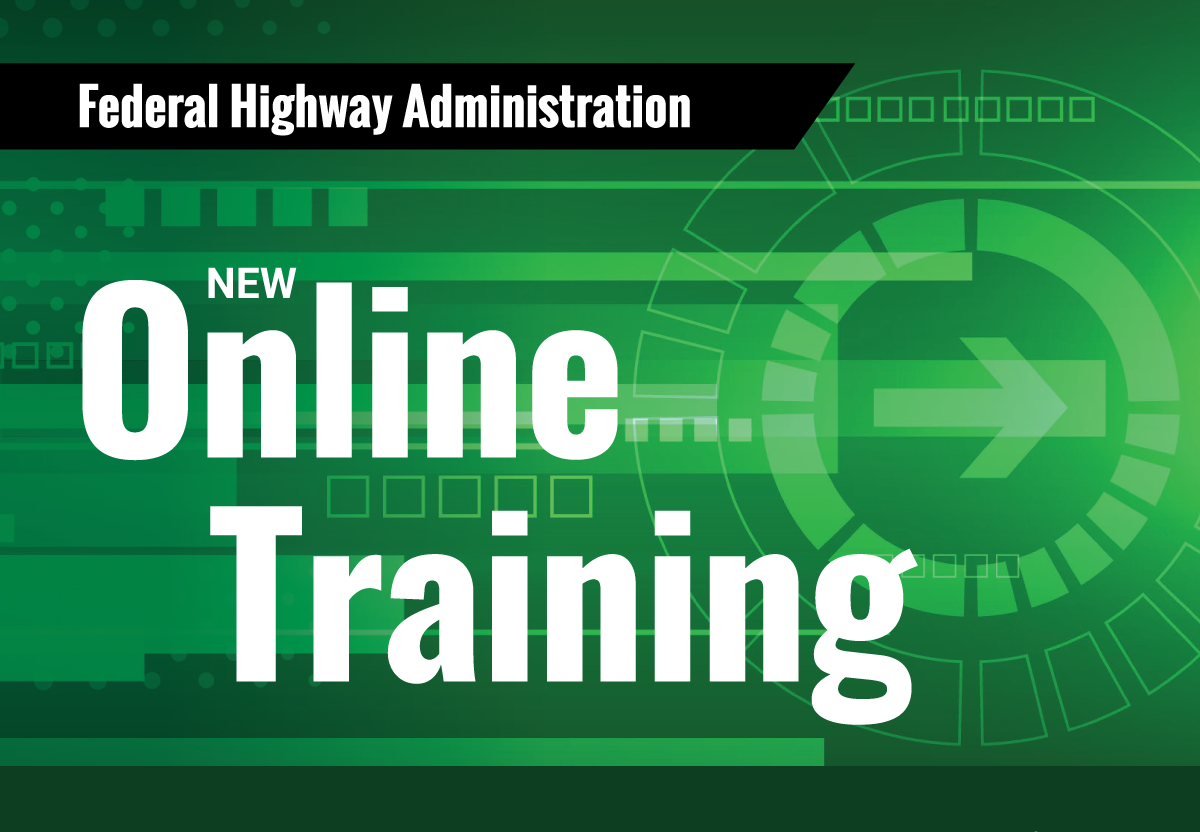 |
- For all transportation professionals
- No registration required
- No cost and available 24 hours a day
- Take at your own pace
|
Courses provide anytime, anywhere access to dozens of training topics designed to meet your individual transportation needs.The training modules may qualify for Professional Development Hours (PDHs), however Continuing Education Units (CEUs) are not available. Start your training today!
Visit https://bit.ly/LASOnlineTraining.
|
|
 |
|
| Visit our website for more information. |
 |
 |
|
LTAP Spotlight |
| Safe Transportation for Every Pedestrian in Underserved Communities (STEP-UC) |
| Writer: Rod Turochy, Director Alabama Transportation Assistance Program, Alabama LTAP Center, Auburn University |
|
|
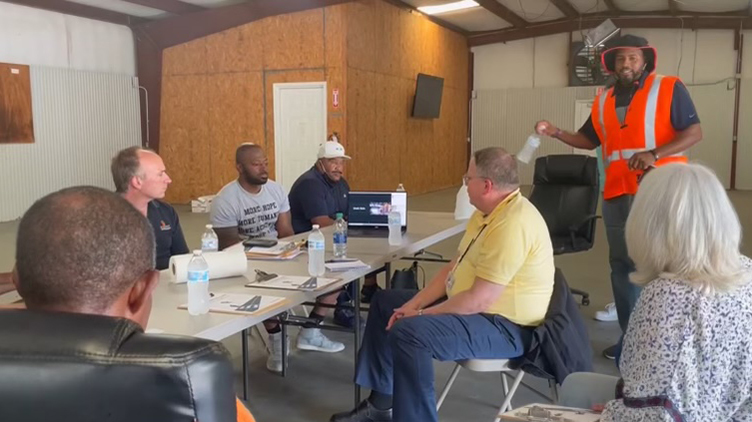 |
| Photo credit: The Fifty Fund |
|
In recent years, pedestrian-involved crashes and fatalities have been on the rise in Alabama and in the U.S. From 2009 to 2019, pedestrian deaths increased by 51 percent in the U.S. while traffic-related fatalities across all types increased by only about 7 percent. Further, low-income communities and people of color are over-represented in these statistics. In response to these trends, the Alabama LTAP Center is leading an effort to work with underserved communities to identify pedestrian facility improvement needs that will lead to safer walking environments. The purpose of the STEP-UC project is to develop, demonstrate, and apply a model that engages historically underserved communities and empowers them to advocate for their pedestrian facility needs, ultimately resulting in improved infrastructure and pedestrian safety.
The Alabama Transportation Assistance Program (ATAP) at Auburn University manages Alabama’s LTAP Center and has resident expertise in traffic safety, particularly in the design and safety effects of pedestrian facilities. Therefore, LTAP is a logical source of leadership and technical assistance, especially for smaller municipalities that may have limited internal resources with the necessary background in transportation planning and pedestrian safety to lead the effort. This aligns well with the LTAP mission of providing technical assistance to localities on transportation issues.
An essential partner in this effort is The Fifty Fund, a 501(c)3 nonprofit organization whose mission includes making communities safer. The organization has been engaged in a variety of projects across Alabama that address community health and safety. The Fifty Fund brings an innovative approach to civic engagement that has yielded active participation of community leaders and local elected officials. Its community-based, street-level methods of engaging the community have yielded successful efforts on many fronts, as seen in video documentation of the walkarounds conducted in Opelika and Troy.
The STEP-UC model involves discussion of pedestrian issues in the community and the assembly of a team comprised of community leaders, transportation engineers, civic engagement experts, and local officials. ATAP, the Fifty Fund, the Alabama DOT, and FHWA’s Alabama Division are all represented on the STEP-UC team. Leaders from the community, such as elected officials, transit system managers, and active transportation advocates, are then brought into the process. A field review—or walkaround—is then conducted to inventory existing conditions and identify potential improvements. During the walkaround, participants use a documentation tool called The Walkaround Guide to note existing conditions and identify improvement needs, such as gaps in sidewalk continuity, ADA-related deficiencies, and potential crosswalk locations and associated traffic control devices.
Based on the findings of the walkaround, the team then develops a report that documents the walkaround and improvement recommendations. ATAP tools such as videos on pedestrian facilities and community benefits of sidewalks can help inform these efforts. This report can be presented to the local government, such as engineering staff and City Council, with a request for a timeline for implementing the improvements. Other localities can follow the same steps to engage their underserved communities, improve pedestrian safety, and identify possible sources of funding.
|
|
|
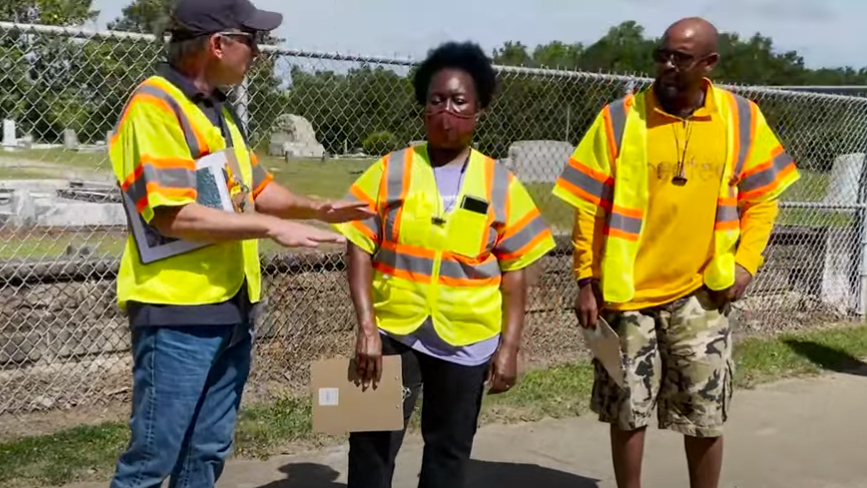 |
| Photo credit: The Fifty Fund |
| For more information on Alabama LTAP, visit https://eng.auburn.edu/atap/. |
| Back to top |
 |
 |
|
About the Local Aid Support Team |
| A Day Off Means a Day to Give! |
|
|
 |
| Photo credit: Morgan Malley, FHWA |
| Morgan Malley is a program manager with the Local Aid Support team in the Office of Transportation Workforce Development and Technology Deployment. She spends some of her regular days off fighting hunger in her community. The program she volunteers with, Food for Thought Denver, was created in 2012 to combat childhood hunger during the weekends. Food for Thought Denver is a 100 percent volunteer-run program with funding coming from community board members. The program services 72 schools in Denver where more than 90 percent of the students are on reduced or free lunch programs. “I began volunteering in March of this year on my RDOs as a way to give back to my Denver community during these difficult times,” said Morgan. “Unfortunately, school tends to be the only time some children have access to regular meals.” As a volunteer, Morgan helps pack and distribute “PowerSacks,” which are bags filled with enough perishable food items to feed a family of four for the weekend. Organizers with Food for Thought Denver say their ultimate goal is to live in a community where weekend hunger is no longer a roadblock in a child’s path to success. “It is very heartening to know that so many people now understand the level of crisis school closures create for children. And it is even more heartening that so many are willing to take the steps to do something about it,” said a spokesperson for Food for Thought Denver. According to Morgan, “I couldn’t think of a better way to spend my RDO Fridays. It is so gratifying to see smiles on the faces of the little ones and their parents. I am thankful to Food for Thought Denver for this opportunity to make a difference for my community.” |
|
|
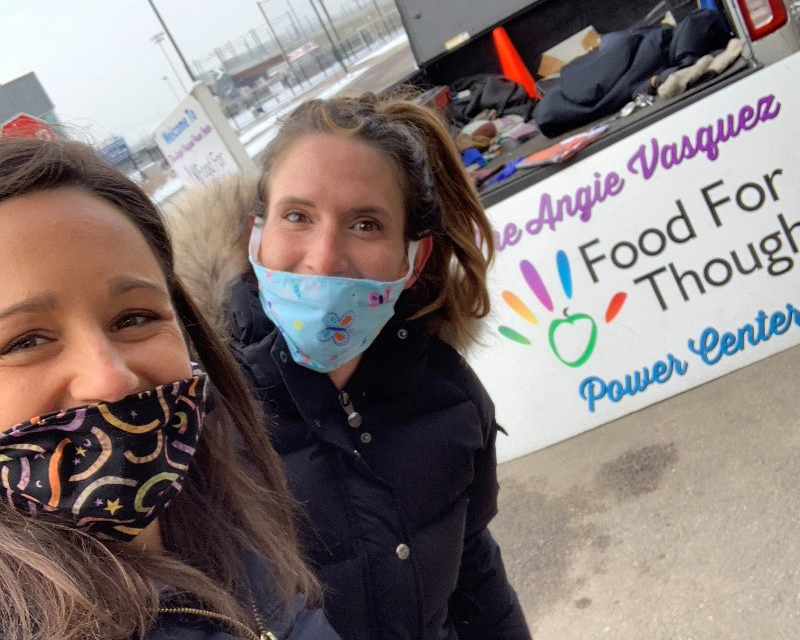 |
| Photo credit: Morgan Malley. FHWA LAS program manager Morgan Malley is pictured here to the right with the blue mask during one of the volunteer days. |
| Back to top |
 |
 |
|
Bulletin Board |
|
|
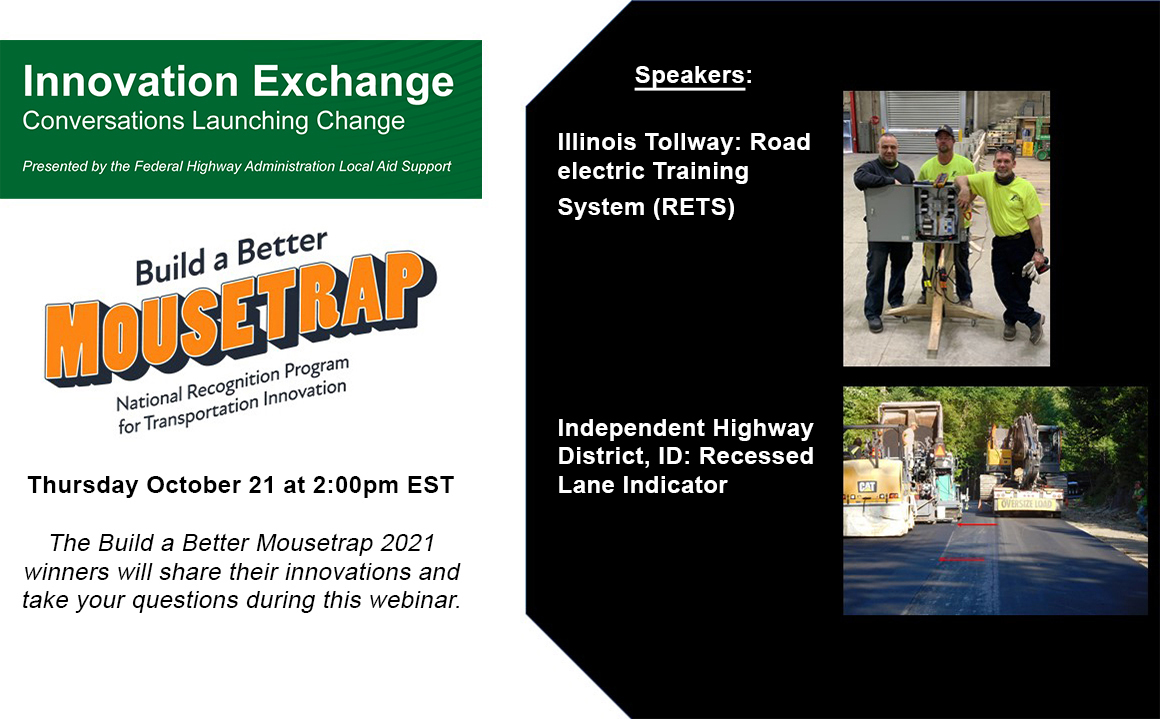 |
 |
| The Road to Success |
| The FHWA Local Aid Support sponsors 24/7 access to hundreds of “need to know” transportation topics for local and Tribal agencies. Please use your government email to register for courses. If you have questions, please contact us at CLAS@dot.gov. |
 |
| Source: FHWA |
|
National Highway Institute
Over 180 web-based courses available
https://bit.ly/nhitrainings
|
AASHTO TC3
Over 190 web-based courses
https://bit.ly/tc3trainings
|
Institute of Transportation Engineers
15 online modules for smaller jurisdictions
http://bit.ly/itetraining
|
Federal Aid Essentials
Online library of 112 informational videos
https://www.fhwa.dot.gov/federal-aidessentials/indexofvideos.cfm
|
Innovation Exchange
FHWA’s bi-monthly webinars on innovative market-ready technology
https://bit.ly/IEWebinars
|
LTAP
Check with your local LTAP Center for available online training
https://www.fhwa.dot.gov/clas/ltap/
|
Local Aid Support
A series of training modules available through FHWA LAS Learning Management System
https://bit.ly/LASOnlineTraining
|
 |
|
|
 |
| FHWA Local Aid Support is rebooting the Innovation Exchange webinar series. No pre-registration is required. Subscribe to the Local Aid Support newsletter for updates on login information. You can also visit our webpage: https://bit.ly/IEWebinars
|
| Here are the planned topics: |
Ultra High Performance Concrete (UHPC) Applications
November 18, 2021
2 p.m.–3:30 p.m. ET |
Build a Better Mousetrap Winner: Jones County, IA
January 20, 2021
2 p.m.–3:30 p.m. ET |
CTIP: Unmanned Aerial System (UAS)
February 17, 2021
2 p.m.–3:30 p.m. ET |
Build a Better Mousetrap 2021 Winners
October 21, 2021
2 p.m.–3:30 p.m. ET |
 |
| Additional Training Webinars |
Value Capture: Making the Business and Economic Case—A Primer
October 6, 2021
1 p.m.–3 p.m. ET | For information
|
Project Bundling: Planning and Capital Programming
October 19, 2021
2 p.m.–3 p.m. ET | For information
|
Safe System and the HSIP: Developing and Administering Systemic Safety Projects
October 27, 2021
1 p.m.–3 p.m. ET | For information
|
Pavement Preservation Webinar Series: CIR/CCPR Mix Design Guidance & Practices
November 18, 2021
2 p.m.–3:30 p.m. ET | For information
|
Pavement Preservation Webinar Series: Slurry & Micro Surfacing Construction Best Practices, Part II
December 16, 2021
2 p.m.–3:30 p.m. ET | For information
|
Project Bundling: Preconstruction
January 18, 2021
2 p.m.–3 p.m. ET | For information
|
| See your state LTAP for even more training options. https://www.fhwa.dot.gov/clas/ltap/
|
 |
| Upcoming Events |
Roadway Management Conference
Rehoboth Beach, DE
October 6–8 | For information
|
National Rural ITS Conference
Raleigh, NC
October 31–November 3 | For information
|
Idaho’s Local Transportation Conference
Boise, ID
November 9–11 | For information
|
ITS America 2021 Annual Meeting
Charlotte, NC December 7–10 | For information
|
 |
| Stay connected with FHWA |
|
|
|
|
|
|
|
|
|
|
| Back to top |
|
|
|
|
|